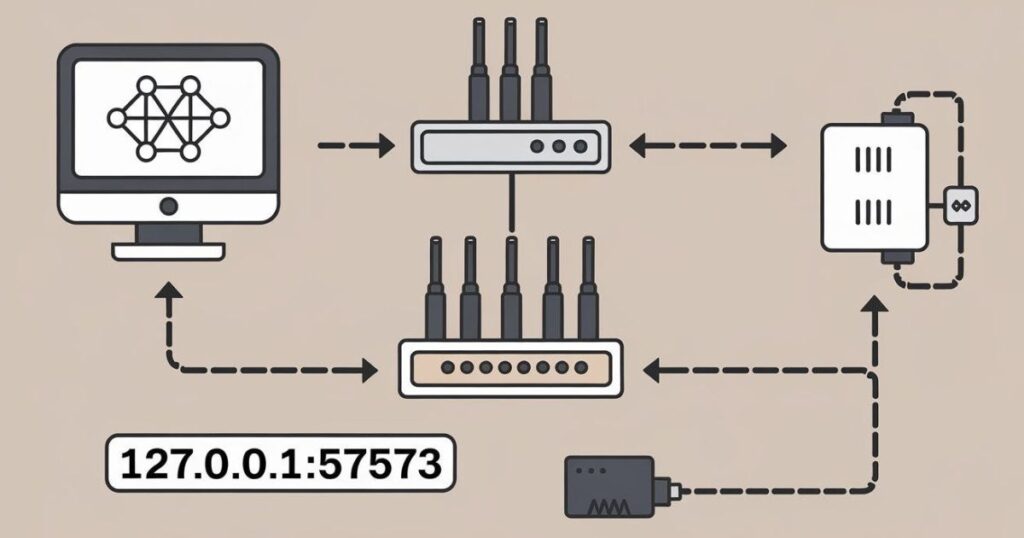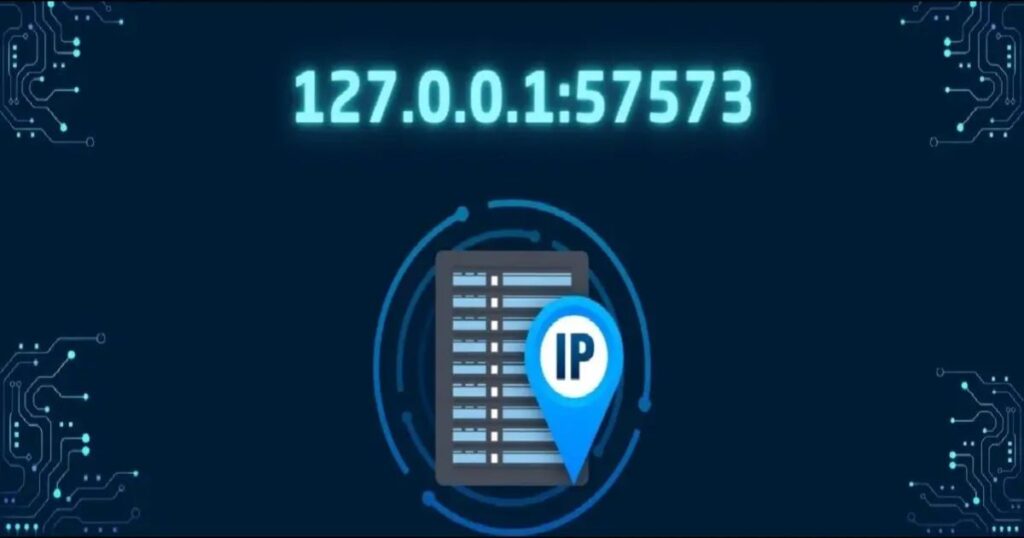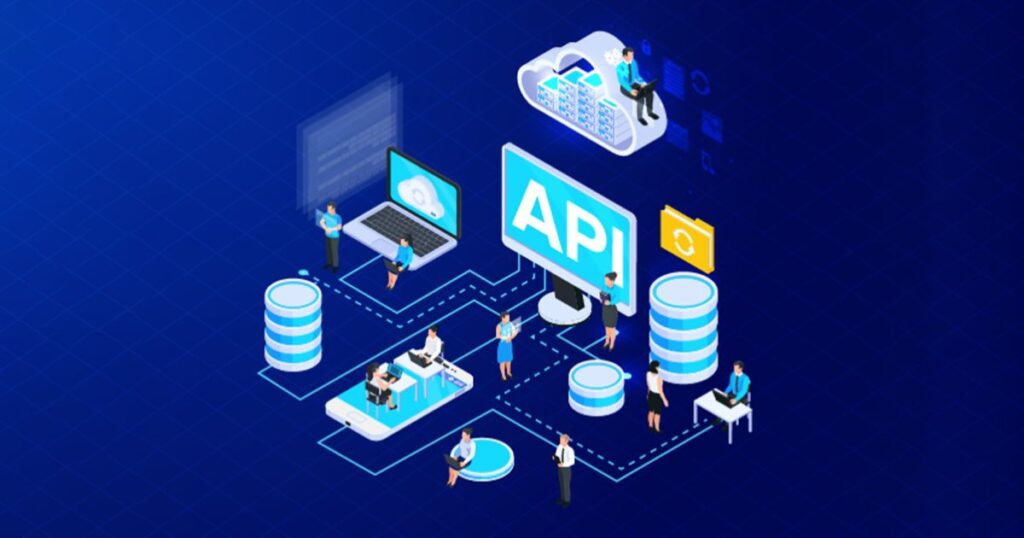Fixing 127.0.0.1:57573 Connectivity Issues refers to resolving problems with local server connections. This guide tackles errors related to the localhost IP address (127.0.0.1) and a specific port number (57573). It aims to help developers troubleshoot and solve common local development roadblocks.
In this simple guide, we’ll walk you through the ins and outs of fixing 127.0.0.1:57573 connectivity issues. From understanding what causes these hiccups to practical steps for resolution, we’ve got you covered. By the end, you’ll be equipped to tackle these pesky errors like a pro.
Fixing 127.0.0.1:57573 Connectivity Issues
Ever stared at your screen, baffled by a local server error? You’re not alone. The infamous 127.0.0.1:57573 error has stumped many a developer. But fear not! This guide will help you crack the code and get your localhost connection back on track.
Think of 127.0.0.1:57573 as your computer’s secret handshake with itself. When it goes wrong, your local development world can grind to a halt. But with a few tricks up your sleeve, you’ll be high-fiving your localhost in no time.
Read More: Owlet Camera Keeps Disconnecting – Fix It
What is 127.0.0.1:57573?

Let’s break it down. IP address 127.0.0.1 is like your computer’s home address. It’s saying, “Hey, I’m talking to myself here!” The port number 57573 is like a specific room in that house. It’s where a particular program or service is hanging out, waiting for connections.
When you put them together, 127.0.0.1:57573 is your computer’s way of knocking on a specific door in its own house. It’s useful for testing websites, apps, or other programs without putting them on the internet for all to see. Think of it as your own private playground for coding shenanigans.
Cause of Error: 127.0.0.1:57573
So, why does this error pop up? There are a few usual suspects. First up, port conflict resolution might be needed. Imagine two programs trying to use the same door at once – chaos! Your firewall configuration might also be playing bouncer, not letting anyone in or out.
Sometimes, the service you’re trying to reach is taking a siesta. Or maybe your account doesn’t have the permissions for port usage. It’s like trying to enter a VIP room without being on the list. Whatever the cause, don’t worry – we’ve got the solutions coming right up!
How to Restart the LXSSManager service for WSL?
If you’re using Windows Subsystem for Linux (WSL), the LXSSManager service is your best friend. But sometimes, even friends need a wake-up call. Restarting this service can often fix your 127.0.0.1:57573 woes.
Here’s how to do it: Press Win+R, type ‘services.msc’, hit Enter. Find ‘LxssManager’, right-click, and choose ‘Restart’. It’s like giving your computer a quick nudge. If you can’t find LXSSManager, make sure WSL is installed. Sometimes, you might need to restart your whole computer – think of it as a full-body stretch for your PC.
Connect the port to Localhost
Now, let’s get that port connected. Open your web browser and type ‘http://localhost:57573’ in the address bar. Hit Enter. If all’s well, you should see your local website or app. If not, don’t sweat it – we’ve got more tricks up our sleeve.
Remember, localhost testing is all about making sure your creation works on your machine before you unleash it on the world. It’s like a dress rehearsal for your code. Make sure your local server is actually running, double-check that port number, and try different browsers if one’s being stubborn.
Various Troubleshooting 127.0.0.1:57573 Steps

Time to roll up our sleeves and dive into some network troubleshooting. First, let’s check your firewall. It might be a bit overzealous in protecting your computer. Try turning it off briefly (remember to turn it back on!). Next, let’s play detective with the netstat command usage. Open Command Prompt and type ‘netstat -ano | findstr :57573’. This will show you what’s hogging that port.
If the port’s busy, try changing your application port settings. It’s like moving to a less crowded room at a party. Don’t forget to update your browser too! Sometimes, your antivirus blocking local connections can be the culprit. Try disabling it temporarily or adding an exception for your local server. And when all else fails, the tried-and-true method of turning it off and on again (aka restarting your computer) can work wonders.
Practical Uses Of 127.0.0.1:57573 in Development
Now that we’ve fixed the issue, let’s talk about why 127.0.0.1:57573 is so handy. It’s your personal sandbox for web application debugging. You can test your creation without the whole internet watching. Got a database you want to experiment with? Local development lets you play around without risking real data.
API development localhost is another superpower. You can build and test APIs right on your machine, tweaking and perfecting before you deploy. It’s also great for security testing. You can try to break your app (in a good way) and fix vulnerabilities before any real hackers get a chance to find them.
Multiple Services Being Operated at Once
Think of your local development environment as a bustling city. Different services are like buildings, each with its own address (port). You can run a web server on one port, a database on another, and an API on yet another. It’s all about smart network port allocation.
Here’s a quick guide to common port uses:
| Port | Service | Use Case |
| 80 | HTTP | Web server |
| 3306 | MySQL | Database |
| 27017 | MongoDB | NoSQL Database |
| 6379 | Redis | Caching |
By running multiple services, you’re creating a mini version of a complex system right on your computer. It’s like having a whole tech stack in your pocket!
Testing Web Applications
Local development is your secret weapon for web application debugging. You can click around your site, try all the buttons, and make sure everything looks just right. And the best part? If something goes wrong, you’re the only one who sees it.
Test your site on different browsers to check compatibility. Try it on your phone or tablet to see how it looks on different screens. You can even simulate slow internet to see how your site handles it. It’s like being your own quality assurance team, all from the comfort of your localhost.
Development of APIs

API development localhost is where the magic happens. You can create and test APIs without needing a live server. It’s faster, safer, and lets you iterate quickly on your design. Tools like Postman become your best friends, letting you send requests to your local API and see how it responds.
Start by defining your endpoints (like /users or /products). Then, implement what each one does. Test with different types of requests (GET, POST, PUT, DELETE) and both valid and invalid data. It’s like training your API for the real world, all from the safety of 127.0.0.1:57573.
Different Types of Server Errors
When working with local servers, you might encounter various errors. The 400 family (like 404 Not Found) usually means there’s a problem with the request. The 500 series (like 500 Internal Server Error) suggests something’s wrong on the server side.
Here’s a quick rundown of common errors:
| Error Code | Meaning | Possible Cause |
| 404 | Not Found | Resource doesn’t exist |
| 500 | Internal Server Error | Server-side issue |
| 403 | Forbidden | Lack of permissions |
| 503 | Service Unavailable | Server overload or maintenance |
Remember, good error handling is key. Make your error messages user-friendly and log the details for debugging. It’s like leaving breadcrumbs for your future self (or other developers) to follow.
Read More: How To Reset Panasonic TV With & Without Remote?
Frequently Asked Questions
Why is 127.0.0.1:57573 important for developers?
It allows developers to test and run applications on their computers, making development faster and more secure.
How do I fix port conflicts causing 127.0.0.1:57573 errors?
Check what’s using the port with tools like netstat, then either stop the conflicting service or use a different port for your application.
What should I do if my firewall blocks access to 127.0.0.1:57573?
Add an exception in your firewall settings for the port you’re using, or temporarily disable the firewall for testing (remember to turn it back on!).
Why is choosing the right port number important?
The correct port number ensures your application can communicate properly and avoids conflicts with other services.
Can I use 127.0.0.1:57573 for hosting a website?
While you can use it for testing, 127.0.0.1:57573 is only accessible on your computer. For others to see your website, you need to host it on a public server.
Conclusion
So, there you have it – your trusty guide to fixing those pesky 127.0.0.1:57573 issues. We’ve walked through the what, why, and how of these local server hiccups. Remember, it’s all about talking to your computer and making sure it’s listening on the right channel. Don’t let these errors get you down – they’re just part of the coding journey.
With the tips and tricks we’ve covered, you’re now armed to tackle these problems head-on. Keep experimenting, keep learning, and don’t be afraid to restart things now and then. Happy coding, and may your localhost always be your best friend in development!

